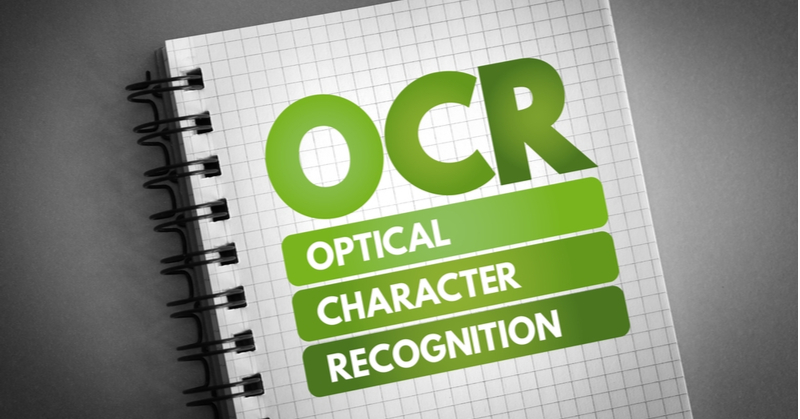New applications of technology like artificial neural networks are driving innovation in self-driving cars, medical diagnoses, and facial recognition. This same tech also has a practical application for your clients' accounting.
Technology tools like invoice processing are taking advantage of cutting-edge changes in optical character recognition (OCR) and machine learning (ML). With these tools, your invoice digitization platform can extract data from raw invoice documents accurately, at a low cost, and at scale.
To stay ahead of the curve in the accounting and finance industry, your firm needs to stay up-to-date on new technology developments. The more you understand about the industry’s technology, the more value you can offer to your clients not just as an accounting service, but also as a strategic advisor.
For accountants, it’s important to understand what is happening behind the scenes of the technology you use, so you can educate your firm, and your current clients, and also attract new business. This article explores the technical foundation of OCR tools that are powering new and exciting developments in Accounts Payable (AP) automation and invoice digitization.
Evolution of Invoice Processing Technology
Invoice processing has certainly evolved from shuffling paper and stuffing checks into envelopes. Over time, basic OCR has become “table stakes” for the industry, powering the first generation of software solutions and now acting as the foundation for new innovations. Here is an overview of the evolution of invoice processing technology.
Legacy Systems: Manual AP Processing
For many businesses, all invoice processing used to happen by hand. Invoices arrived through multiple channels, from PDFs and paper docs to XML documents or the Electronic Data Interchange (EDI). The more data points, the more time and manual effort were required to input into one centralized system. Data entry errors were common, which amplified mistakes like paying incorrect amounts or duplicating or missing invoice payments.
Ultimately, even your most careful staff member couldn’t guarantee they can key in 100% accurate dates, values, and formulas. Invoice processing cost time, paper, and postage, and created other expenses like missing early payment discounts or receiving late fees.
Template-Based Optical Character Recognition (OCR)
Template-based OCR, sometimes also called commonplace or legacy OCR, represents (generally) the first generation of invoice processing solutions. By itself, OCR doesn’t process invoices; it converts documents into text that is the foundation of a tool like an invoice solution.
This tech tool completes “template-based reading”, using a template document to discover where data fields usually are. Then, using either image-based or text-based rules, the tech converts invoices into machine-encoded text.
However, with this first generation of OCR tech, users needed to basically set up the invoice recognition software constantly, creating a new template or rule for every new invoice type. In many cases, it was still a time-consuming and error-prone solution.
OCR Powered with Machine Learning and Artificial Intelligence
Now, we have new generations of invoice processing that layer OCR with developments in machine learning.
Artificial intelligence (AI) and Machine Learning (ML) are essentially a simulation of human thought processes, based on machine systems. This technology is driven by algorithm networks known as artificial neural networks (ANN) that interconnect and share data. Each ANN collects information constantly and stores this knowledge in a machine-based "brain". Modern invoice processors use this brain to more accurately process invoices, rather than relying on an imperfect template that may require adjustments.
As self-learning tech, the more documents and data it reviews, the more accurate the system becomes over time. While minor corrections may be required occasionally, deep learning functionality allows these networks to understand, process, and use the text in different data fields, even in new document formats it hasn’t seen before.
To summarize, unlike template-based OCR, ML-powered OCR doesn’t rely on rules or templates. It instead imitates a human brain to detect and then structure document data.
OCR Applications for AP Automation and Invoice Processing
These exciting developments in OCR are being applied to AP automation and invoice processing. There are a few reasons why this is especially significant for accounts payable.
First, while one company may use the same template for invoicing every time, invoices can vary widely between companies. Even commonalities like invoice data fields might not be named the same way at all.
For example, naming standards for the total amount of the invoice can range from “total” to “amount due” to “pay in USD”. While a human may be able to understand all of those meanings, legacy OCR technology might not be able to tell the difference, which increased the chance of extracting inaccurate data and creating accounting errors.
Financial documents are complex and data-heavy, yet it is critical to get the data right. Modern ML-powered OCR technology applies machine learning to the data, picking up templates and naming standards over time with occasional input from a human team.
This technology is transforming accounting firms, taking away some tedious manual work and allowing team members to focus their time on more important things.
What Does the OCR Process Look Like?
So what does the actual process look like? Here is a brief, simplified overview.
1. Invoices are imported into the system from various sources (PDF, EDI, spreadsheets, photos from a phone camera of a paper invoice, etc.).
2. ML processing begins, automatically extracting and structuring data. You can customize the setup for whatever key values you need, from the item info to the due date.
3. (Optional) If staff members are processing a new invoice format or a tricky data setup, they may choose to validate the data extraction at this step. Machine learning can also flag a manual review if certain confidence standards are not met.
4. Captured data is exported into your integrated ERP or accounting system. If your organization has set up any workflows for approvals, invoice information is distributed according to your custom rules for review before moving on to processing.
5. Your data is integrated into a unified system and your invoices are categorized accurately according to the systems you set up.
Examples of Machine Learning Applications
At Plate IQ, we’ve been fine-tuning our machine learning OCR to meet the unique needs of clients, including accounting firms.
Invoice data in particular is very difficult because many companies process large numbers of invoices from wide-ranging organizations. There are many reasons invoice OCR can be tricky: inconsistent fonts, custom SKUs, incomplete math, non-standard line items, dense invoice data, complex layout, long item names, item names that are inconsistent or subjective, and more.
Our model is constantly improving, because we aim to create a machine learning model that can learn data extraction, rather than always needing to use a memorized template to understand invoice structure. To let you in on some of the challenges Plate IQ faces, here are two examples of invoices our machine learning has come to learn.
Is the invoice debit or credit?
Due to different invoice layouts, one common issue is determining whether the amount on an invoice is a debit or credit. As Plate IQ engineers found out, this seemingly simple issue is actually quite complex to fix.
For instance, a credit invoice total may be printed as -100.00 or 100.00-, which could be relatively easily configured. But other credit amounts may not even be listed as negative, and instead listed next to diverse field titles like credit, memo, refund, or returns.
While template-based methods are difficult to scale for this challenge, ML-powered OCR can learn over time how to recognize the difference between debit and credit on an invoice (you can read how our Plate IQ engineers approached this problem here).
Localization in Invoice Header Fields
The Plate IQ platform processes tens of thousands of vendor invoices every day, from vendors like major food distributors, liquor vendors, produce or meat suppliers, and also boutique farm-to-table vendors.
Invoice structure and naming conventions fluctuate between all these different vendors. Depending on the image and OCR quality, “localizing” headers and adapting the wide range of data about invoice number, date, tax, and total to the software was difficult to scale. Our engineers needed to create a system that could generalize to all of these various invoice formats, and you can read more about their technical process here.
Benefits of OCR-Powered Tech
Now that you understand the OCR tech underlying invoice processing technology, you can better recognize why this technology can be helpful to both your accounting firm and your clients. Overall, machine learning OCR can streamline accounts payable work, automating costly processing and transforming back-office work.
1. Faster Invoice Processing
Smart ML-powered OCR solutions get faster and more accurate with every new invoice, recognizing data fields and speeding up automation. With this tool, you can pay your bills on time and gain the opportunity to analyze your spending.
2. Increased Productivity
ML tech saves your team time by removing manual data entry and correction, as well as eliminating template and rule creation. You can free up accounting staff to focus on tasks that add more value to your clients, like reporting, tracking insights, and financial planning.
3. Highly Accurate Data Extraction
Machine learning OCR prevents manual errors that are especially common when someone is carrying out a repetitive task like data entry.
4. Cost Savings
Invoice automation can create many opportunities to streamline your budget. For example, timely approval and payment can give you access to vendor early payment discounts. The more efficient your processing, the more efficient other areas of your business like procurement or distribution can be. And with more accurate data extraction, available faster, you can monitor your cash flow in real-time and make more informed decisions.
OCR and ML Powering Exciting New Accounting Innovations
With your understanding of OCR tech, you’re empowered to get even more out of the new developments in accounting technology. If your firm is interested in leveraging the latest in OCR and ML tech, Plate IQ can help you transform your AP automation and payment process. Plate IQ has you covered when you're ready to take the next step with integrations with the software you already use, including QuickBooks integration.
.png?width=150&height=63&name=TWRlogo-regmark_blueblack%20(1).png)
.png)










Do you have questions about this article? Email us and let us know > info@woodard.com
Comments: